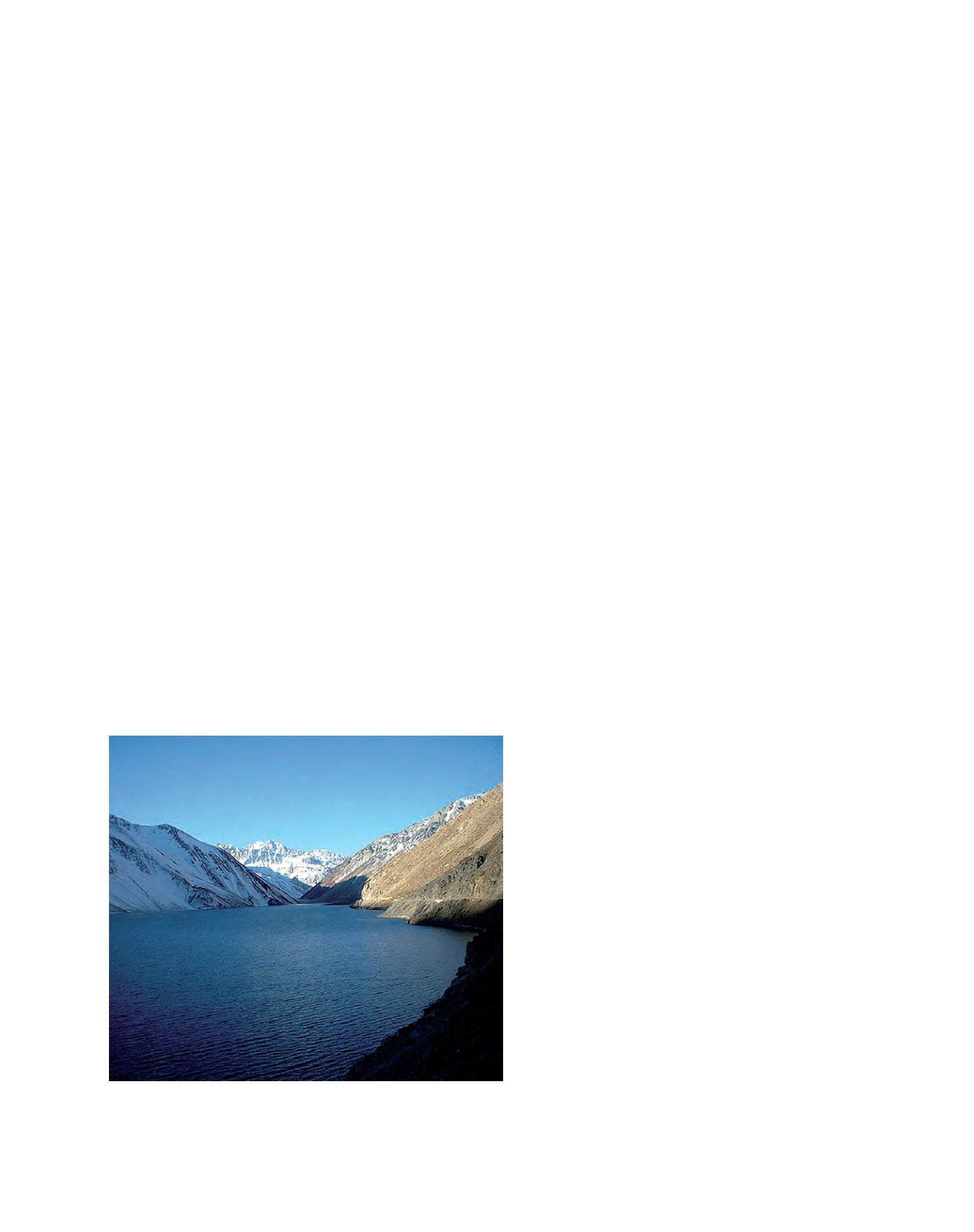

[
] 106
G
overnance
and
P
olicy
A first step was taken with the generation of climate
scenario simulations using the Providing Regional
Climates for Impacts Studies (PRECIS) regional model,
developed by the Hadley Centre at the UK Met Office.
Simulations were performed by the meteorology group
at the University of Chile and were carried out for A2,
B2 and the baseline (1961-1990 period) scenarios with
a resolution of 25 kilometres.
1
The agriculture sector in particular will be affected by
climate change, and will benefit from using the simulation
results. Awarmer climatewill affect the precipitation system,
the amount of winter snow on the Andes Mountains, the
terrestrial flora and fauna and the spread of diseases. To
minimize, or at least manage the impacts of temperature
increase, the simulations can be used to determine when,
for example, chemical substancesmay be used to counteract
effects of a rise in temperature. Some of the most vulnerable
agriculture systems are those in dry land prairie in central
Chile, where exotic forest species like pine and eucalypt
grow. Also, the warmer environment and the decrease in
water availability will impose hydro-stress on plants with
consequences on their growth and even survival. As the
forestry and agriculture sectors are crucial to the country’s
development, it is necessary to evaluate future scenarios for
adaptation. CONAMA took action on this and requested a
study that was developed by the Centre of Agriculture and
Environment of the University of Chile.
2
Using PRECIS outputs for A2 and B2 scenarios along-
side a model that simulates plant productivity, an overall
displacement was found of the current distribution of
ecosystems toward southern and upslope locations in
response to climate change. Among other findings, the
study indicates that most sowing times will change in
annual farming, and this may overcome in part the adverse
climate situation. In central Chile, irrigatedwheat will accel-
erate its lifecycle in response to a warmer environment, yet
it will also be highly affected by the rise in droughts. Wheat
production in southern Chile and upslope locations, on
the other hand, will increase. Corn production is set to
significantly increase with warmer climates. And while
potato production will suffer in central and southern Chile,
an increase is expected in coastal and mountainous areas.
Overall, the impact of climate change on the forest and agri-
culture sector varies according to the specie and the region;
it can be negative or positive. Adverse responses are mainly
related to a reduction in the availability of water, which will
require improvedmanagement and prepared infrastructure
to store excess water. To face this and other related issues,
the Minister of Agriculture created the Agriculture Climate
Change Council, a governmental body in charge of guiding
and establishing priorities in an adaptation programme.
Some actions already undertaken include the ongoing
study
Determination of the current and potential erosion in
the Chilean territory
, as well as initiatives for studying the
genetic improvement of vegetation and the determination
of the carbon footprint for exporting products.
Water resources for agriculture and hydropower are
vital to Chile’s development. The IPCC and PRECIS
projections indicate less precipitation and snow accu-
higher increases being in northern Chile and along the Andes moun-
tains. Regarding precipitation, all model simulations predict a decrease
in rainfall in the central and southern parts of Chile, while an increase
is expected in the southernmost region of the country during the winter
season. The observed and projected climate changes will not only have
consequences in the natural environment, but also in all societal sectors.
The above-mentioned changes and projections imply a strong impact
on water resources. Chile is highly dependent on hydrological power
generation for its energy supply, and on water for mine operations,
industries, forest and agriculture sectors and human consumption. Also,
continental Chile has a long coast facing the Pacific Oceanwithmany low
zones that can be affected by rising sea levels. The country has arid and
semi-arid areas that can increase in a warmer and drier climate, as well
as susceptible areas for deforestation, erosion and desertification. In addi-
tion, changes in the ocean will affect the fishery industries, aquiculture
and marine biodiversity. Chile, therefore, is highly vulnerable to climate
change and action needs to be taken to manage its: geographical spatial
and natural resources in urban and non-urban developments; exposed
coastal areas; water resources; and the potential impacts of extreme
weather events.
To this end the Commission for National Environment, or
Comisión Nacional del Medio Ambiente (CONAMA), developed,
with the approval of all state secretaries, a National Action Plan for
Climate Change: 2008-2012. The plan involves three defined priori-
ties: adaptation to climate change impacts; mitigation of greenhouse
gas emissions; and development of capacity building.
The plan pursues the development of adaptation measurements
that will protect the population’s well-being, hydrological resources,
food provision, urban and coastal infrastructure and energy supply.
To do this, the Chilean government encourages and supports actions
that will permit the definition of future climate scenarios of vulnera-
bility to climate change in all sectors, with the purpose of evaluating
the impacts on the environment as well as the socioeconomic costs
related to adaptation measurements.
Water resources for agriculture and hydropower generation are vital for Chile’s
development. More dams will be needed for reserving and managing water
resources in a warmer and drier climate (Dam El Yeso)
Image: Janette Calderon
















